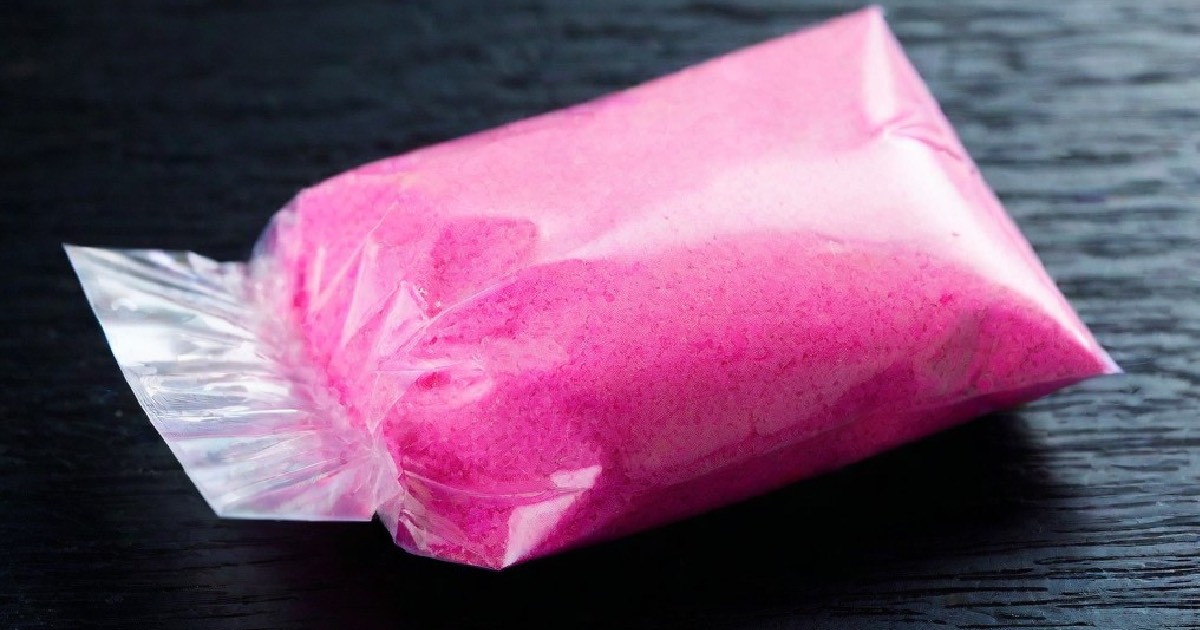Pink cocaine, also known as Tusi or Tusibi, is a synthetic party drug that has gained popularity in certain nightlife circles, particularly in Latin America and Europe. Despite its name, pink cocaine is not related to traditional cocaine but is a blend of various synthetic substances, with 2C-B (a hallucinogenic phenethylamine) being one of the most common active ingredients.
Tusi stands out for its vibrant pink powder appearance, appealing branding, and euphoric effects, making it popular at festivals, nightclubs, and raves. However, its unpredictable composition and potential risks make it a dangerous recreational drug. Let’s learn more about pink cocaine and what makes this substance especially concerning.
Origins and Evolution of Pink Cocaine (Tusi)
The term Tusi is believed to originate from the drug 2C-B, a psychoactive substance that first emerged in the 1970s. Originally developed by chemist Alexander Shulgin, 2C-B was used in psychotherapy before being banned due to its recreational abuse. Over time, the street version of 2C-B, combined with other substances, became known as pink cocaine due to its distinct color and powdery form.
Tusi gained widespread popularity in Colombia’s nightlife scene in the 2010s and has since spread to other parts of the world, often marketed as a luxury drug due to its colorful presentation. It has also been linked to various celebrities, including Liam Payne, Lamar Odom, and Diddy.
What’s Inside Pink Cocaine?
The composition of Tusi varies greatly, which makes it particularly dangerous. While 2C-B is the primary psychoactive ingredient, street versions often contain other substances, such as:
- Ketamine: A dissociative anesthetic
- MDMA or Ecstasy: A stimulant and empathogen
- Lidocaine: A local anesthetic to mimic cocaine’s numbing effect
- Amphetamines: Potent stimulants that enhance energy and alertness
Since Tusi is produced illegally, its ingredients are unregulated and can differ from batch to batch, making every use risky. Users have no way of knowing the exact substances they are ingesting.
How is Tusi Used?
Tusi is typically sold as a pink or brightly colored powder and is usually snorted or ingested orally. Some users also mix it with drinks at parties. Its effects tend to last between 1 to 4 hours, depending on the dose, purity, and the individual’s metabolism.
Effects of Pink Cocaine (Tusi)
The effects of Tusi can vary based on its ingredients but often include euphoria, increased energy and sociability, mild hallucinations, and altered perception of time. The effects of Tusi feel similar to MDMA, with users reporting that they feel social, confident, and energetic. While these effects may appeal to party-goers, they are accompanied by significant risks.
Risks and Dangers of Pink Cocaine
Using Tusi poses several dangers due to its unregulated nature and unpredictable composition. Common risks include:
- Overdose Risk: Mixing substances like 2C-B with stimulants or depressants increases the likelihood of overdose.
- Adverse Psychological Effects: Hallucinations, panic attacks, anxiety, and paranoia can occur, especially with high doses.
- Heart Problems: The stimulants in Tusi may lead to elevated heart rates, hypertension, and cardiac issues.
- Drug Interactions: Users who mix Tusi with alcohol or other drugs face higher health risks.
- Addiction Potential: While 2C-B itself is not highly addictive, substances like MDMA or amphetamines in Tusi may cause dependence over time.
- Inconsistent Potency: With no regulation or quality control, users can never be sure of the potency, increasing the risk of dangerous side effects.
Is Pink Cocaine Legal?
Tusi is illegal in most countries. The drug 2C-B, which is often the active ingredient, is classified as a Schedule I substance in the United States, meaning it is considered to have no medical use and a high potential for abuse. Other ingredients commonly found in Tusi, such as MDMA or ketamine, are also regulated substances with severe legal consequences for possession or distribution.
Conclusion
Pink cocaine, or Tusi, may appear glamorous and exciting in party settings, but its unpredictable composition and potentially harmful effects make it a dangerous drug. Users face not only health risks such as overdose, heart problems, and psychological distress but also legal consequences due to the drug’s illegal status. It’s important to raise awareness about the risks associated with synthetic drugs like Tusi, especially as they gain popularity in social settings.
Pura Vida Recovery provides treatment services for substance use and mental health disorders. If you or someone close to you has been using pink cocaine, it’s important to know that help is out there. While pink cocaine may be associated with recreational use, it’s a substance that carries many risks, especially because you don’t know what is in each dose. Seeking professional treatment today allows you to break the cycle of substance use and protect yourself from future harm. Contact Pura Vida Recovery to learn more about our treatment services.





